What is S-3 plasticizer and how to use it?
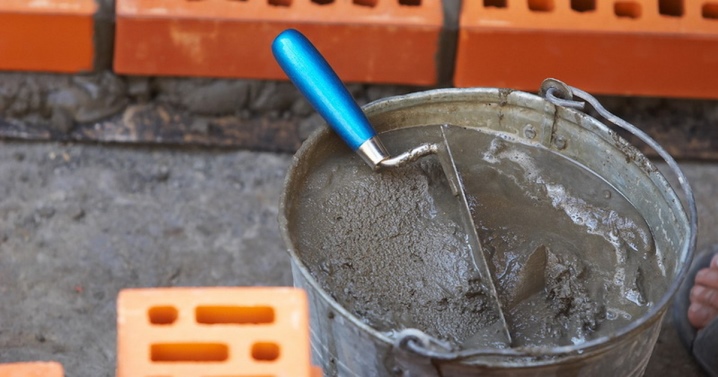
Plasticizer S-3 (polyplast SP-1) is an additive for concrete, which makes the mortar plastic, fluid and viscous. It facilitates construction work and improves the technical characteristics of the concrete mass.
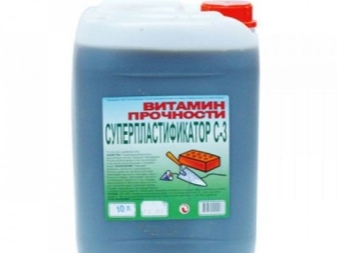

Composition
The additive consists of components that, during the mixing of the solution, enter into a chemical reaction with cement, forming a mass with the required physicochemical properties. Content of S-3 plasticizer:
- sulfonated polycondensates;
- sodium sulfate;
- water.
The additive is produced using the technology of multistage synthesis of cellulose components according to the manufacturer's specifications.

Peculiarities
Concrete is the backbone of most building structures. It is made by mixing cement, sand and water. This is a classic technology for making concrete mass. Such a solution is often inconvenient to work with. Heat, frost, rainy weather, the need to use the mixture in hard-to-reach places can complicate the construction process.
Plasticizer S-3 for cement mortar is made to improve the technical characteristics of concrete mass and hardened stone. It makes the work with the mixture easier, which makes it possible to speed up the construction process. The addition of an additive provides the mortar with greater fluidity, so that it can easily penetrate into narrow formwork.
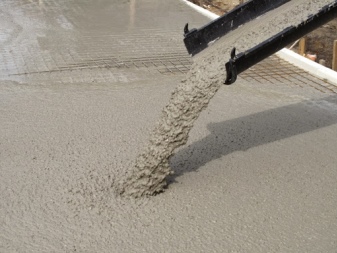
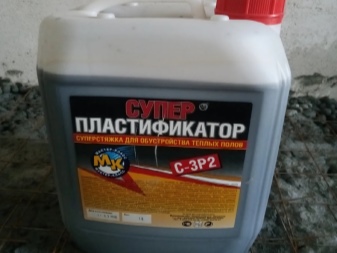
Effect of the additive:
- increasing the duration of the mobility of the concrete mass up to 1.5 hours;
- increase in concrete strength up to 40%;
- improvement of adhesion by 1.5 times (speed of adhesion to reinforcement);
- improving the plasticity of the mass;
- decrease in the concentration of air formations;
- improving the strength of the monolith;
- increasing the frost resistance of the composition up to F 300;
- decrease in the water permeability of the frozen stone;
- ensuring the minimum shrinkage of the mass during solidification, due to which the risks of cracking and other defects are significantly reduced.
Thanks to the use of a plasticizer, cement consumption is reduced by up to 15% while maintaining the strength characteristics and bearing capacity of the erected objects. Due to the use of the additive, the amount of required moisture is reduced to 1/3.
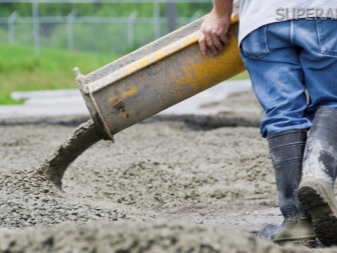
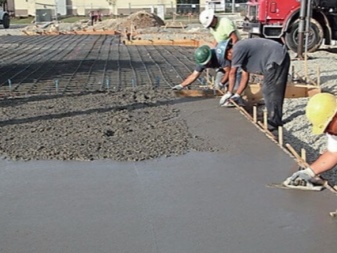
Applications
Plasticizer S-3 is a versatile additive that is widely used in the construction industry. Concrete with its addition is used:
- in the production of individual structures with complicated shapes (these can be columns, supports);
- when creating reinforced concrete rings and pipes, for which it is necessary to use concrete with increased strength classes;
- when erecting reinforced supporting structures, for example, multi-storey residential buildings;
- when installing formwork;
- in the production of plates and panels used in civil engineering;
- when installing strip and monolithic foundations.
Additive for concrete C-3 is used when there is a need to improve the quality of the cement mortar when making floor screeds, making paths for a garden or laying paving slabs.
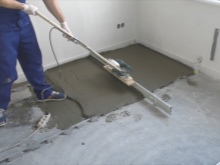
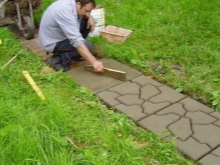
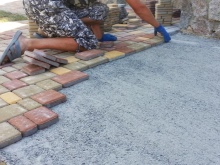
Advantages and disadvantages
The additive improves the rheological properties of the cement slurry, as well as its physical and mechanical properties. It is compatible with most types of concrete improvers - hardening accelerators, additives for increasing frost resistance and other additives.
C-3 increases the curing time of the solution. On the one hand, this property is considered an advantage in situations where it is necessary to deliver ready-mixed concrete to remote construction sites. On the other hand, this is a disadvantage, since due to the increase in the duration of curing, the pace of construction is reduced.
To accelerate the setting process, catalyst substances are added to the finished mass.
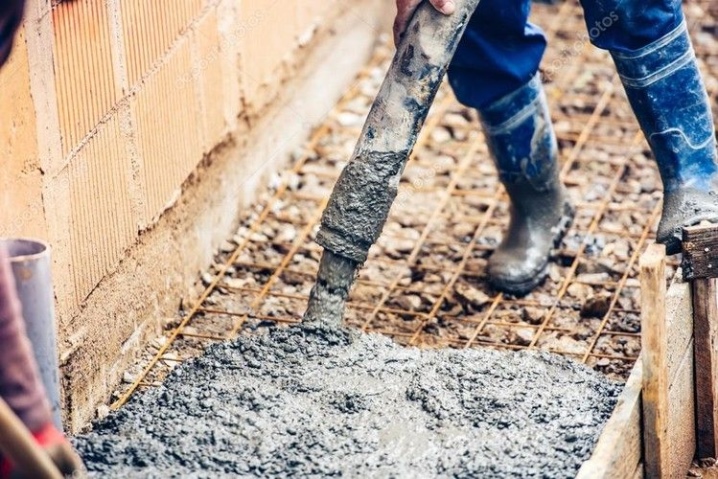
Other advantages include:
- budgetary cost;
- increasing the convenience of working with concrete - the mass does not stick to forms and is easily mixed;
- obtaining concrete with a higher strength class;
- low consumption (for each ton of the binder component, from 1 to 7 kg of powdered plasticizer or from 5 to 20 liters of a liquid additive per 1 ton of solution is required).
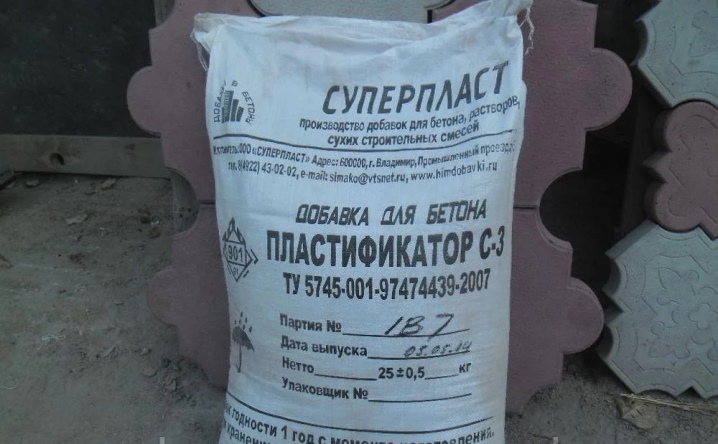
Thanks to the use of the S-3 plasticizer, it is possible to resort to the mechanized method of pouring concrete mass, to save the amount of cement, to exclude the use of vibration compaction equipment.
The disadvantages include the possible risks of allergic reactions in builders, since the plasticizer contains formaldehydes, which evaporate during operation.

Product types and overview
Plasticizer S-3 is produced by many domestic and foreign companies. Let us present a rating of brands, whose product quality was assessed by professional builders and home craftsmen.
- Superplast. The company was founded in 1992. Its production facilities are located in the city of Klin (Moscow region). The workshops are equipped with specialized lines of Russian and foreign brands. The company is engaged in the production of modified epoxy binders for the production of polymeric materials.
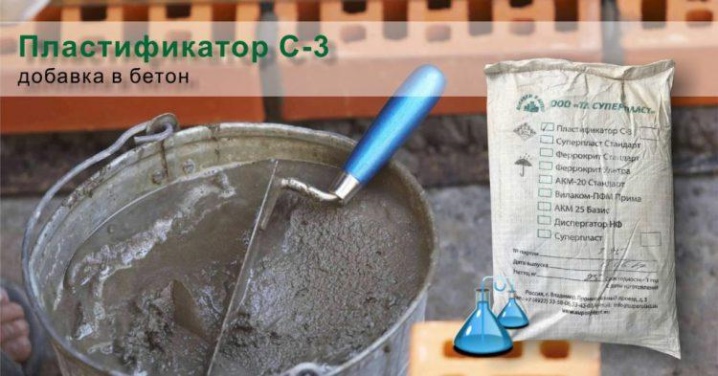
- "Grida". Domestic company founded in 1996. Its main activity is the production of waterproofing materials. Superplasticizer S-3 with improved characteristics is produced under this brand.
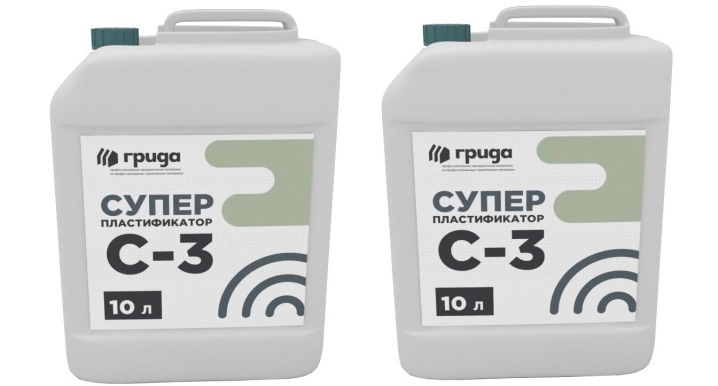
- "Vladimirsky KSM" (building materials combine). One of the largest manufacturers of materials for construction throughout Russia.

- "Optimist". A domestic company engaged in the manufacture of paints and varnishes and various goods for construction since 1998. The manufacturer develops its own brands, the lines of which include more than 600 product names. He also manufactures "Optiplast" - superplasticizer S-3.
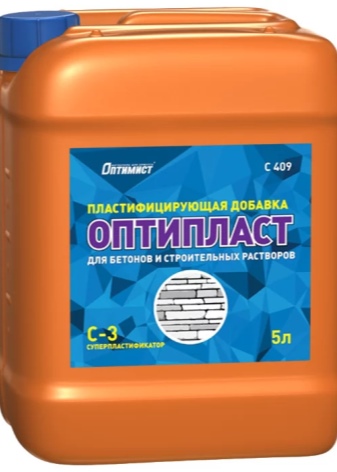
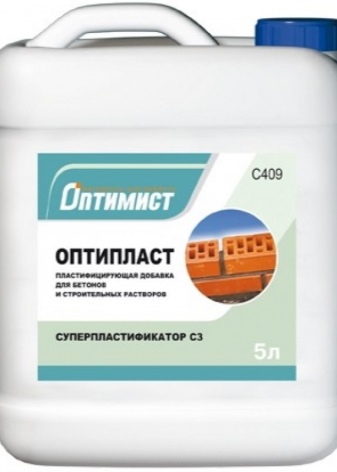
There are other equally well-known manufacturers of the S-3 plasticizer. These are Obern, OptiLux, Fort, Palitra Techno, Areal +, SroyTechnoKhim and others.

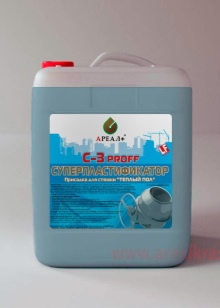
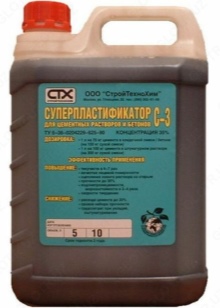
Plasticizing additive S-3 is produced by manufacturers in 2 types - powder and liquid.
Dry
It is a polydisperse (with various sizes of fractions) powder with a brown tint. Supplied in polypropylene waterproof packaging, packed in weight from 0.8 to 25 kg.
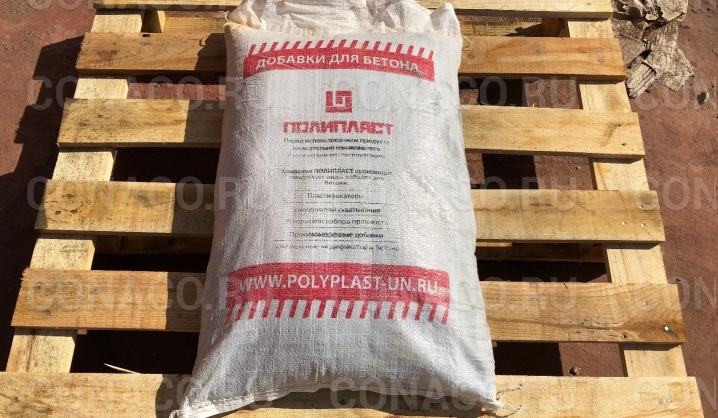
Liquid
This additive is manufactured in accordance with TU 5745-001-97474489-2007. It is a viscous liquid solution with a rich coffee shade. The density of the additive is 1.2 g / cm3, and the concentration does not exceed 36%.
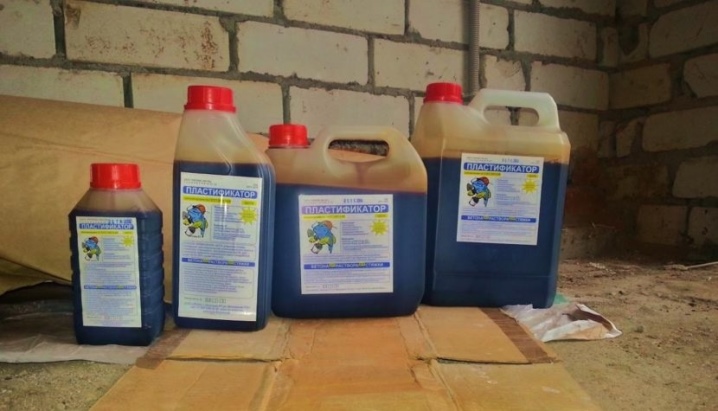
How to dilute?
Before using a powdered plasticizer, it must first be diluted in warm water. For this, an aqueous 35% solution is prepared. To prepare 1 kg of improver, 366 g of a powdered additive and 634 g of liquid are required. Some manufacturers advise letting the solution sit for 24 hours.
It is easier to work with a ready-made liquid additive. It does not need to be diluted in a certain proportion and take time to infuse. However, in both cases, it is important to make the correct calculation of the concentration for concrete.
There are some general guidelines:
- for screed floors, leveling walls and making non-massive structures, 0.5-1 liters of improver per 100 kg of cement will be required;
- to fill the foundation, you will need to take 1.5-2 liters of additives per 100 kg of cement;
- for the construction of private buildings on a bucket of cement, you need to take no more than 100 g of a liquid additive.
There are no uniform requirements for the production of S-3 plasticizer, which makes it difficult to determine the standard method of using the additive.
In this case, it is important to study the instructions for use from the manufacturer. It describes in detail the concentration, proportions, method of preparation and introduction into concrete.
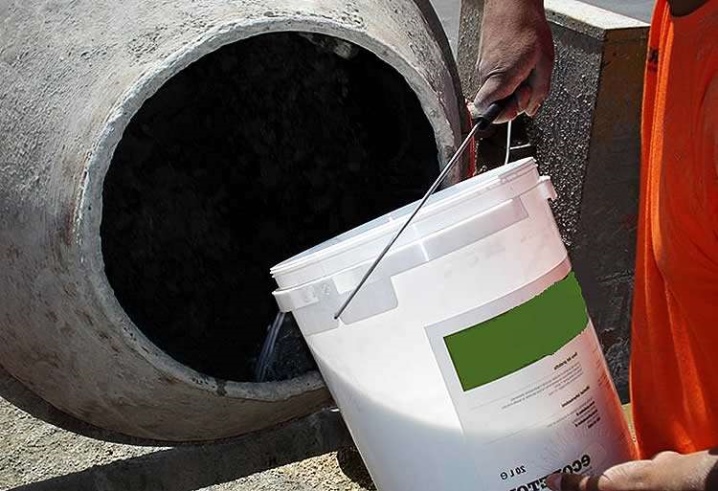
Expert advice
For the production of a cement mass with the required technical characteristics, it is important to heed a number of recommendations from professional builders and manufacturers of the C-3 additive.
- When preparing the mortar, it is necessary to strictly observe the proportions of the sand-cement mixture, water and additives. Otherwise, the mass may end up with insufficient strength and moisture resistance.
- It is not necessary to increase the amount of the added additive to improve the quality of the concrete mixture and finished stone.
- The prescribed technology for preparing the concrete mass must not be neglected. For example, when additives are added to a practically finished solution, the plasticizer will be unevenly distributed. This will have a bad effect on the quality of the finished structure.
- To create the mortar, it is recommended to use building materials that meet generally accepted quality standards.
- To identify the optimal concentration of the plasticizer, it is necessary to correct the composition of the cement-sand mixture by an experimental method.
- The powdered additive should be stored for no more than 1 year in heated and ventilated rooms with low air humidity. The liquid additive is stored in a dark place at t + 15 ° C. It is protected from rainfall and direct sunlight. When frozen, the additive does not lose its properties.
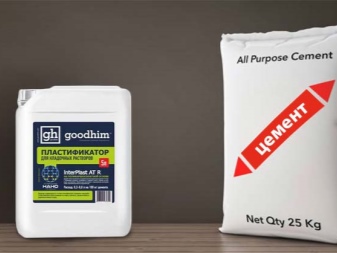
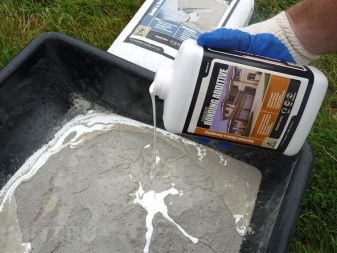
Liquid additives C-3 are chemically aggressive substances that can cause allergic reactions in workers and provoke the formation of eczema. To protect mucous membranes and respiratory organs from harmful vapors, when working with improvers, you should use protective respirators and gloves (GOST 12.4.103 and 12.4.011).
How to use the plasticizer C-3, see the video.













The comment was sent successfully.